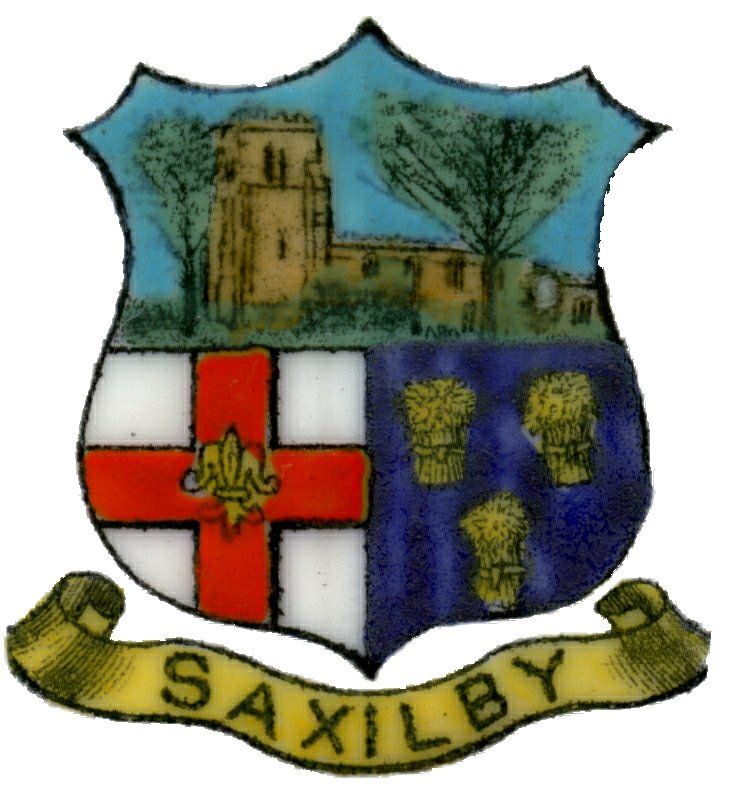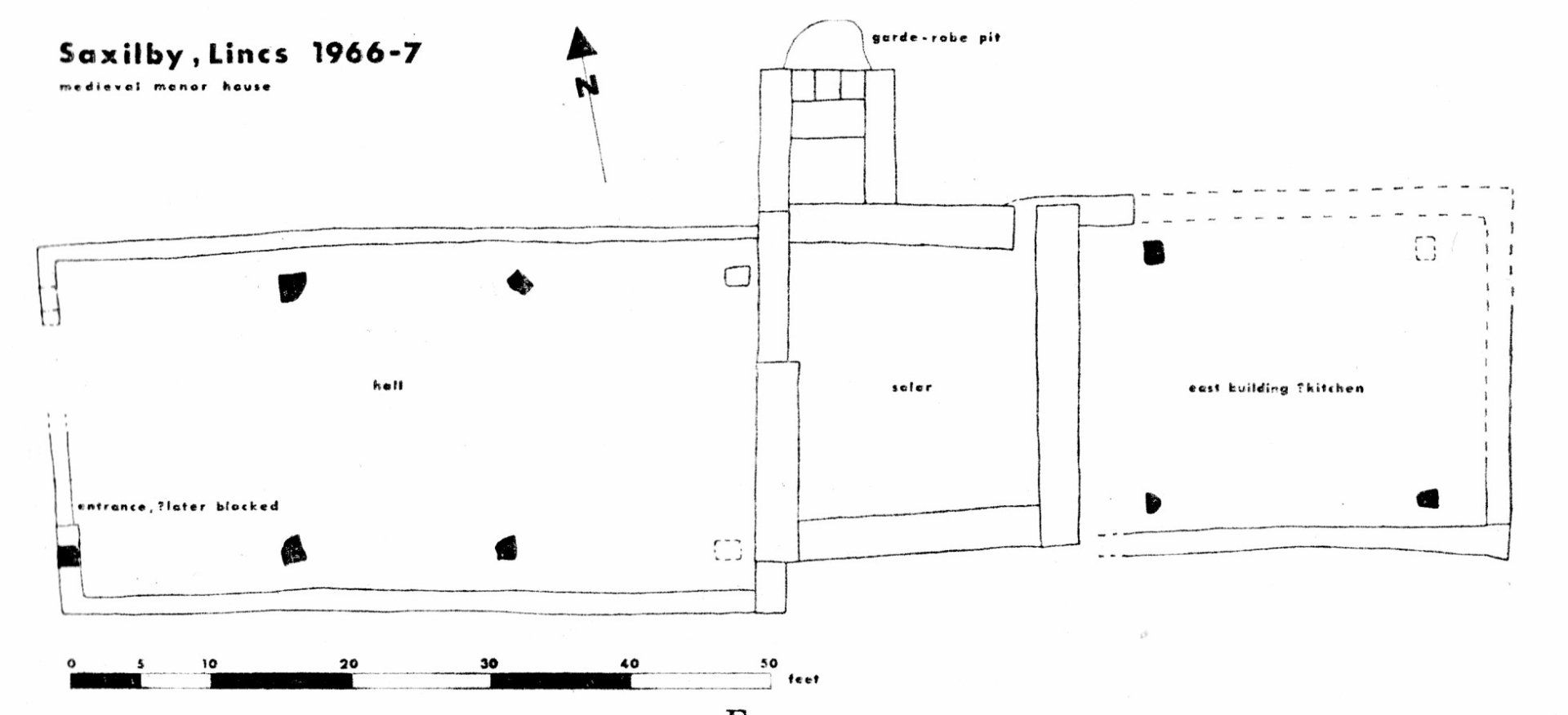A Moated Medieval Manor-House
In the winter of 1964, Mr Tomlinson, of Sykes Farm reported the discovery of stone in ploughing old grassland in a field near Sykes Junction. The site was visited by JB (Ben) Whitwell, the Keeper of the City & County Museum in Lincoln. What he found was a rectangular ditched area 67metres (220ft) by 100metres (330ft) (there are 3 other sites like this within Saxilby, at Hardwick, South Ingleby and North Ingleby). Field walking across the site produced a scatter of medieval pottery.
Excavation took place over eight week-ends during the summer of 1966, supervised by Ben Whitwell.
The first area investigated was that of the finds made in ploughing in the north-west corner of the enclosure. It was soon clear that the plough had encountered substantial walls of a rectangular chamber, measuring 7metres (24ft) square. The walls themselves were 1metre (3ft) thick. The interior of the chamber had a floor of split stone tiles, later revealed as Collyweston slate (mined in an area south-west of Stamford). Many roofing nails were also found within the excavated area.
It became clear that a building on the north side of this chamber, a projecting tower 3metres (10ft) square, was a garderobe tower (a medieval toilet), projecting from a solar chamber (the owner's private living and sleeping quarters).
To the east of the Solar, a building 11metres (35ft) by 9metres (28ft) was found. Here was a considerable amount of broken pottery laying on a mix of ash and clay. As most of this pottery was used cooking pots, this building appeared to be the kitchen. Within this area three stone emplacements were found for timber roof supports.
As time did not allow for the area to the west of the Solar building to be excavated by hand, a mechanical excavator was used.
The walls of an aisled hall 15metres (50ft) by 8metres (25ft) were found, as well as six stone emplacements. The walls of this hall were much flimsier than those of the Solar block, being only 1ft wide.
What had been discovered over this short excavation period was a Medieval Moated Manor-House. As most of the pottery can be dated within a period 1275-1325, and the way the roof tiles had fallen when the main roof collapsed, it was considered that the building only had a very short life.
It was speculated at the time that the Manor-House was possibly owned by Richard Saunterre (i.e. the' Landless'), who acquired land at Ingleby and Saxilby late in the 13th century. He is recorded here in 1315. Soon after, it is possible that as soon as he was gone, his roof and his dream-manor fell like a house of cards.
An alternative interpretation of the site now speculates that it was a grange farm belonging to the Gilbertine Monastery at Catley (between Walcot and Tattershall), which is recorded with a land holding in Ingleby in 1303 and 1348.

